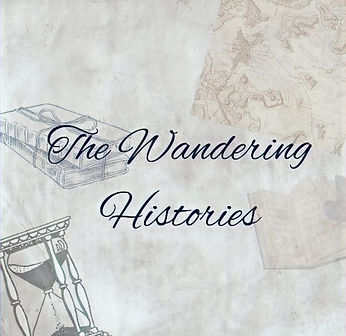Lessons in Resilience: How History’s Hardest Times Helped Forge Stronger Futures
- raebo99
- 3 days ago
- 4 min read

History, dear reader, is a peculiar creature. It lumbers through the ages, dragging behind it a rather impressive collection of calamities and triumphs—like an eccentric great-aunt rummaging through her bottomless handbag. Yet, in its depths, we find a recurring theme: resilience. Humanity, in its infinite curiosity and stubbornness, has a knack for staring down calamity, muttering “not on my watch,” and emerging with newfound strength, like a phoenix with a flair for the dramatic. Let us wander through a few moments in time when adversity tried its best to topple us, and we, in response, invented sturdier boots.
1. Innovations Born of the Black Death
The 14th century was not what one might call a “banner year” for humanity. Picture it: a shadow loomed across Europe, known ominously as the Black Death—a pestilence that, had it hands, would surely twirl a mustache and cackle menacingly. But even in the face of such despair, humanity proved surprisingly resourceful. The laboring class, previously overlooked, found their skills in high demand—an unexpected but welcome plot twist in the grand tale of feudal society.
Meanwhile, desperate to outwit future disasters, people began tinkering with concepts that might one day be called “medicine” and “sanitation.” The road was undoubtedly bumpy (leeches were involved, after all), but the journey planted seeds of progress that would grow for centuries. Even in the face of unspeakable darkness, the unyielding spark of innovation refused to be extinguished.
But the ripples of the Black Death didn’t stop at innovation; they sparked a cultural awakening. The massive social upheaval created fertile ground for fresh ideas, encouraging a move away from medieval constraints and sparking the intellectual and artistic flourishing known as the Renaissance. With traditional structures disrupted, curiosity blossomed. Art, science, and literature took a leap forward as a renewed interest in human potential and classical knowledge surged across Europe. The Renaissance was, in many ways, the phoenix rising from the ashes of the plague—proving that even the darkest times can herald the dawn of extraordinary transformations.
2. The Great Depression: Communities United in Resourcefulness
The Great Depression may have been an era of scarcity, but it was also a time when communities discovered the extraordinary strength that comes from standing together. Families stretched what little they had, weaving creativity into the fabric of everyday life—quite literally, in some cases. Flour sacks, once purely utilitarian, became colorful dresses and clothing for families in need, thanks to manufacturers who recognized the ingenuity of resourceful mothers.
Victory gardens sprouted in backyards, empty lots, and rooftops, transforming patches of earth into symbols of hope and resilience. These gardens weren’t just about growing vegetables; they were about cultivating a shared sense of purpose and the promise of brighter days ahead. As the shadow of war loomed on the horizon, these seeds of ingenuity blossomed into the collaborative spirit that would define the efforts of World War II—a time when humanity’s ability to unite and adapt reached new heights.
3. The Rebuilding of Europe Post-WWII
Now let us pause at one of history’s more dramatic crossroads: the aftermath of World War II. Picture a continent shattered and scarred, its cities reduced to rubble. It was a time of profound sorrow—but also one of extraordinary resilience.
Cue the Marshall Plan—a grand effort to rebuild Europe’s economy and infrastructure, proving that even in the wake of destruction, cooperation can emerge as a beacon of hope. But this rebuilding was about so much more than bricks and mortar. It was about reclaiming humanity, nurturing a sense of shared purpose, and daring to believe in a brighter future.
Amid the ruins, communities found strength in unity. Neighbors who had survived unimaginable hardship now worked side by side, rebuilding homes, schools, and dreams. Artists and writers began to weave stories of hope, sparking a cultural revival that reflected the determination to heal not just the land, but the spirit. The optimism of this era was contagious—a belief that from devastation could arise not only recovery, but the possibility of lasting peace. And as nations joined hands to form alliances and lay the foundations for modern diplomacy, they sent a powerful message to future generations: even the greatest trials can be met with hope and resolve.
4. The Tech Revolution: Innovating Through Challenge
And now, dear reader, we arrive in the modern era—a time bursting with technological wonders that seem straight out of the pages of science fiction. Faced with global challenges, humanity has turned to innovation not just as a tool for survival, but as a catalyst for creativity.
Consider the strides in renewable energy technology—a marvel that harnesses the sun’s rays and the wind’s whispers to power our lives sustainably. These advancements are not merely about practicality; they are a testament to human ingenuity and a determination to build a brighter future.
But the tech revolution doesn’t stop at solving challenges—it’s also igniting the spark of imagination in a new generation. From graphic design tools that allow artists to craft vivid masterpieces to platforms that turn budding writers into published authors, technology is opening doors to creative expression like never before. In classrooms, workshops, and virtual spaces, people from all walks of life are honing their skills, driven by the limitless possibilities these tools provide. Indeed, the human spirit, ever inquisitive and resourceful, continues to flourish in this digital renaissance.
Closing Thoughts:
The history of resilience is not merely a tale of survival—it is a testament to transformation. Through hardship, humanity has repeatedly emerged stronger, armed with lessons that shape the future. As we face the trials of today, may we remember the fortitude of those who came before us—their determination to turn adversity into opportunity and their unshakable belief that brighter days lie ahead.


Comments